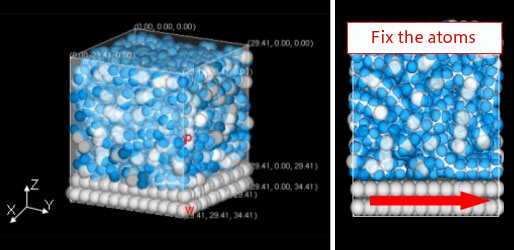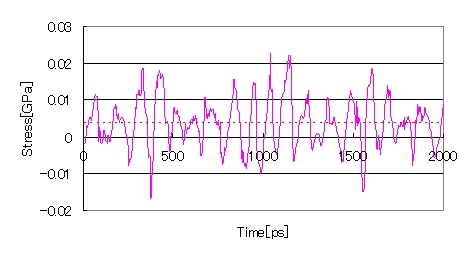Polymer/Solid Interface Friction
The microscopic friction phenomena between amorphous polyethylene (PE) and a graphite wall were analyzed using Full-Atomistic Molecular Dynamics (FAMD). An interfacial model created with J-OCTA’s modeling function was used, and interfacial stress was evaluated when the wall was moved at a constant velocity. The friction coefficient at the microscale was calculated from horizontal and vertical stresses.
Use Cases Highlights
- Evaluation of microscopic friction phenomena in resins
- Evaluation of friction coefficients at the microscale
- Utilization for material design
Construction of interfacial models
An interfacial model of polyethylene and graphite wall is shown. Carbon is white, hydrogen blue, with periodic boundaries in X and Y directions and reflective boundaries in Z direction, representing PE in a glassy state at 100 K.

Interfacial model of polyethylene and graphite wall
Time variation of stress
The time variation of horizontal stress at the interface on the wall surface is shown. Positive stress is defined in the opposite direction to wall movement, with the mean value indicated by a dashed line. From this, the friction coefficient at the microscale can be calculated. Caution is needed when comparing directly with macroscale friction phenomena, but the results are expected to be useful in material design.

Time variation of interfacial stress on wall surface
Reference
[1] A.P.Awasthi, D. C. Langoudas and D. C. Hammerand, Modelling Simul. Mater. Sci. Eng. 17 (2009) 015002
Details of analysis
Inquiries Regarding Products
Have questions about product implementation? Contact us today.





